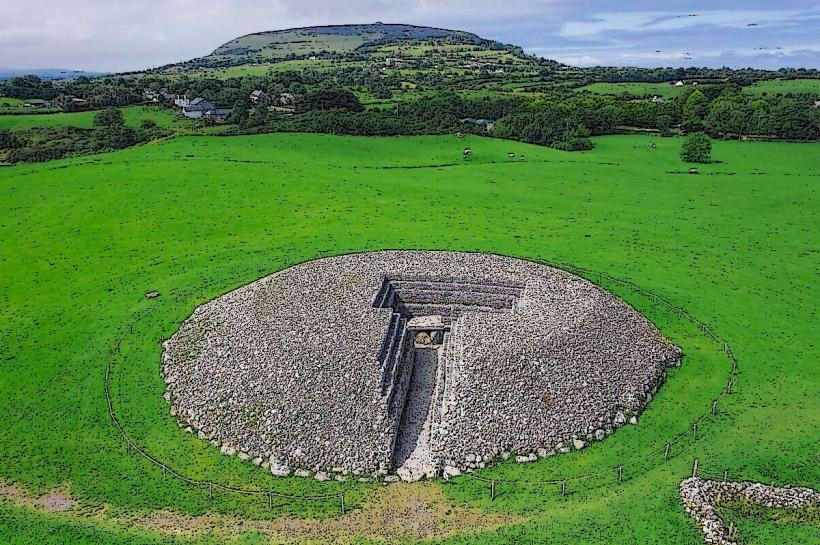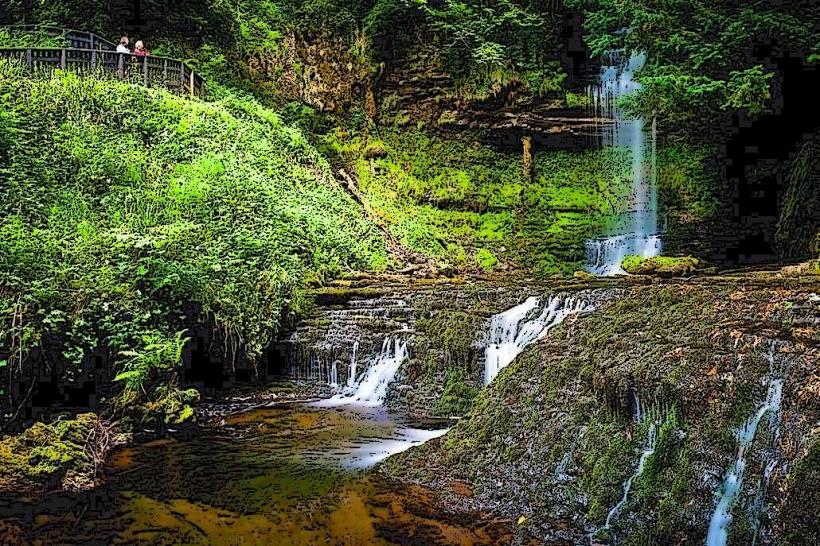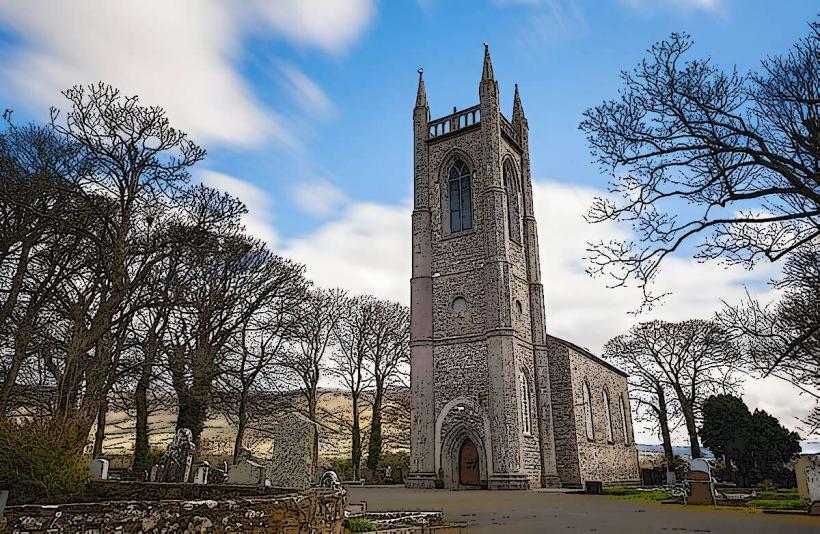Information
Landmark: Lissadell HouseCity: Sligo
Country: Ireland
Continent: Europe
Lissadell House is a historic estate located near Ballinfull Bay in County Sligo, Ireland. The house is set amidst stunning parkland and boasts a rich history, with ties to the landed gentry, Irish nationalism, and the Yeats family, among others. It is regarded as one of Ireland’s most significant country houses, offering visitors a glimpse into both the grandeur of the past and the fascinating individuals who lived there.
1. Overview and Location
- Lissadell House is located about 10 kilometers (6 miles) north of Sligo Town, near the village of Ballinfull. The estate is set in a picturesque location, overlooking Ballinfull Bay and surrounded by rolling hills and wooded grounds, providing scenic views of the Irish countryside.
- The estate has been a private residence for centuries, and it is still owned by descendants of the original family. The house and surrounding parkland are open to the public, allowing visitors to explore its fascinating history.
2. History of Lissadell House
- The origins of Lissadell House can be traced back to the early 19th century. The current house was built in 1830 by the Gore-Booth family, one of Ireland's prominent Anglo-Irish families. The Gore-Booths were involved in landownership and political life in Ireland during the 18th and 19th centuries.
- The house is built in the Greek Revival architectural style, which was popular during the early 19th century. It is characterized by its grand proportions, classical detailing, and impressive portico. The house’s interiors are equally grand, featuring historical furnishings, art, and decorative pieces from various periods.
3. The Gore-Booth Family
- The Gore-Booth family played a significant role in the development of the estate and the surrounding area. The family was known for their involvement in Irish politics and their strong connection to the land.
- The most famous members of the Gore-Booth family associated with Lissadell are Constance Markievicz and her sister Eva Gore-Booth.
- Constance Markievicz (1868–1927) was a key figure in the Irish War of Independence and the Irish Civil War. She was the first woman elected to the British House of Commons and played an active role in the 1916 Easter Rising. She was also a strong advocate for women's rights and social reform.
- Eva Gore-Booth (1870–1961) was a poet, activist, and social reformer. She was deeply involved in the campaign for the Irish independence movement and was a champion of workers' rights and women’s suffrage.
- The Gore-Booth sisters were prominent figures in the Irish nationalist movement, and their involvement in political and social causes made Lissadell House a symbol of resistance and reform in Ireland.
4. The Yeats Connection
- William Butler Yeats, the famous Irish poet, had a close connection to Lissadell House. Yeats spent significant time at the house, visiting regularly during his youth due to his friendship with the Gore-Booth family.
- Yeats was especially fond of Eva Gore-Booth, and his experiences at Lissadell influenced many of his works. The house and its beautiful surroundings are thought to have inspired Yeats’s poems, such as "The Wild Swans at Coole" and "The Stolen Child."
- Yeats’s relationship with the Gore-Booth sisters, particularly with Eva, was a significant part of his life, and Lissadell House became a place that symbolized the romantic and intellectual ideals that were central to his early poetry.
5. Architectural Features
- The house itself is an elegant example of Greek Revival architecture, with an impressive facade, tall columns, and a grand staircase. The interiors feature a mix of period furniture, fine art, and historical artefacts, giving visitors a taste of the estate’s grandeur during its peak.
- The grounds around Lissadell House are beautifully landscaped, with wooded areas, flower beds, and impressive views of the nearby Bay. The estate is also home to several historic outbuildings, including stables, servant quarters, and a walled garden, all of which contribute to the overall charm of the property.
6. Lissadell House Today
- Today, Lissadell House is open to the public as both a historic house museum and a venue for cultural events. The estate has been carefully restored and preserved, allowing visitors to explore its interior rooms, gardens, and surrounding parkland.
- The house often hosts guided tours, which offer insights into the history of the Gore-Booth family, the Yeats connection, and the broader social and political history of Ireland.
- Lissadell also serves as a venue for cultural events, including art exhibitions, musical performances, and literary readings, further cementing its role in Irish cultural life.
7. Attractions and Things to Do
- Guided Tours: Visitors can take a guided tour of the house to learn about its history, the Gore-Booth family, the Yeats connection, and its role in Irish political life.
- Gardens and Grounds: The gardens around Lissadell House are beautifully landscaped, with expansive views of the surrounding countryside. Visitors can explore the walled garden, wooded areas, and enjoy a peaceful walk around the estate.
- Cultural Events: Lissadell House hosts a variety of cultural events throughout the year, including art exhibitions, theatrical performances, and musical concerts. These events often feature Irish artists and performers, making Lissadell an important cultural hub in the region.
- Picnics and Outdoor Activities: The parkland around Lissadell is ideal for a leisurely picnic or a day of outdoor activities. Visitors can also enjoy cycling, hiking, and nature walks in the surrounding countryside.
8. Visitor Information
- Opening Hours: Lissadell House is generally open to the public from April to October, with varying hours depending on the season.
- Admission Fees: There is an admission fee for tours of the house and estate. The cost may vary depending on the season and the type of tour.
- Accessibility: The house and grounds are accessible to most visitors, with wheelchair access to some areas of the estate. However, certain parts of the house may not be fully accessible.
9. Nearby Attractions
- Sligo Town: Lissadell is just a short drive from Sligo, which is home to a number of other attractions, including Yeats’ Grave at Drumcliff Churchyard, Sligo Abbey, and The Yeats Memorial Building.
- Benbulben: A striking mountain in the Sligo area, it offers spectacular views and hiking opportunities.
- Carrowmore Megalithic Cemetery: Another significant historical site, Carrowmore is one of the largest and most important megalithic cemeteries in Ireland.
10. Conclusion
Lissadell House is an important historical and cultural site in County Sligo, offering a fascinating glimpse into the lives of the Gore-Booth family, the Yeats connection, and the broader history of Ireland. Whether you’re interested in Irish history, literature, or simply enjoy exploring beautifully preserved country estates, Lissadell House is a must-visit destination in Ireland.






